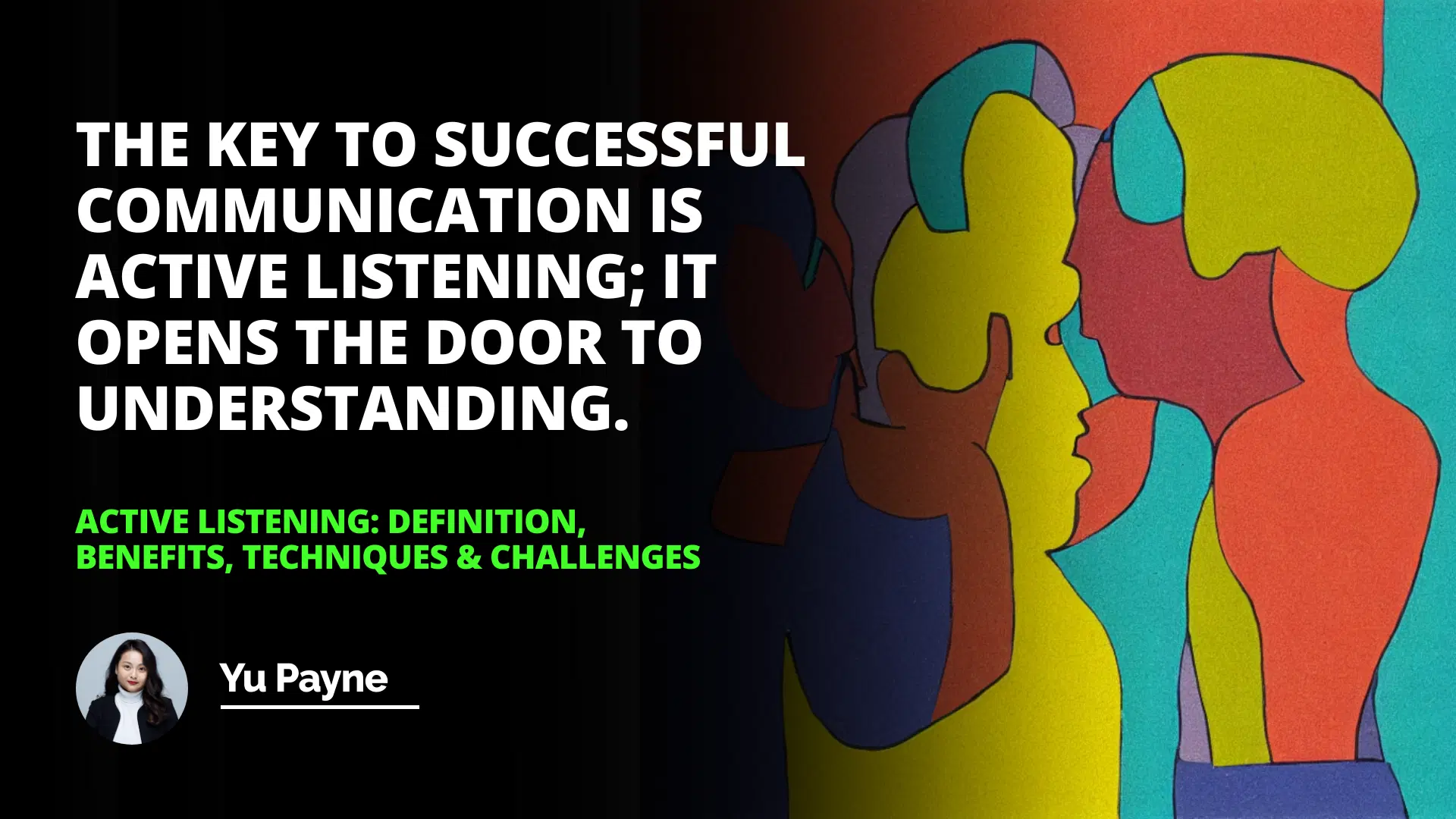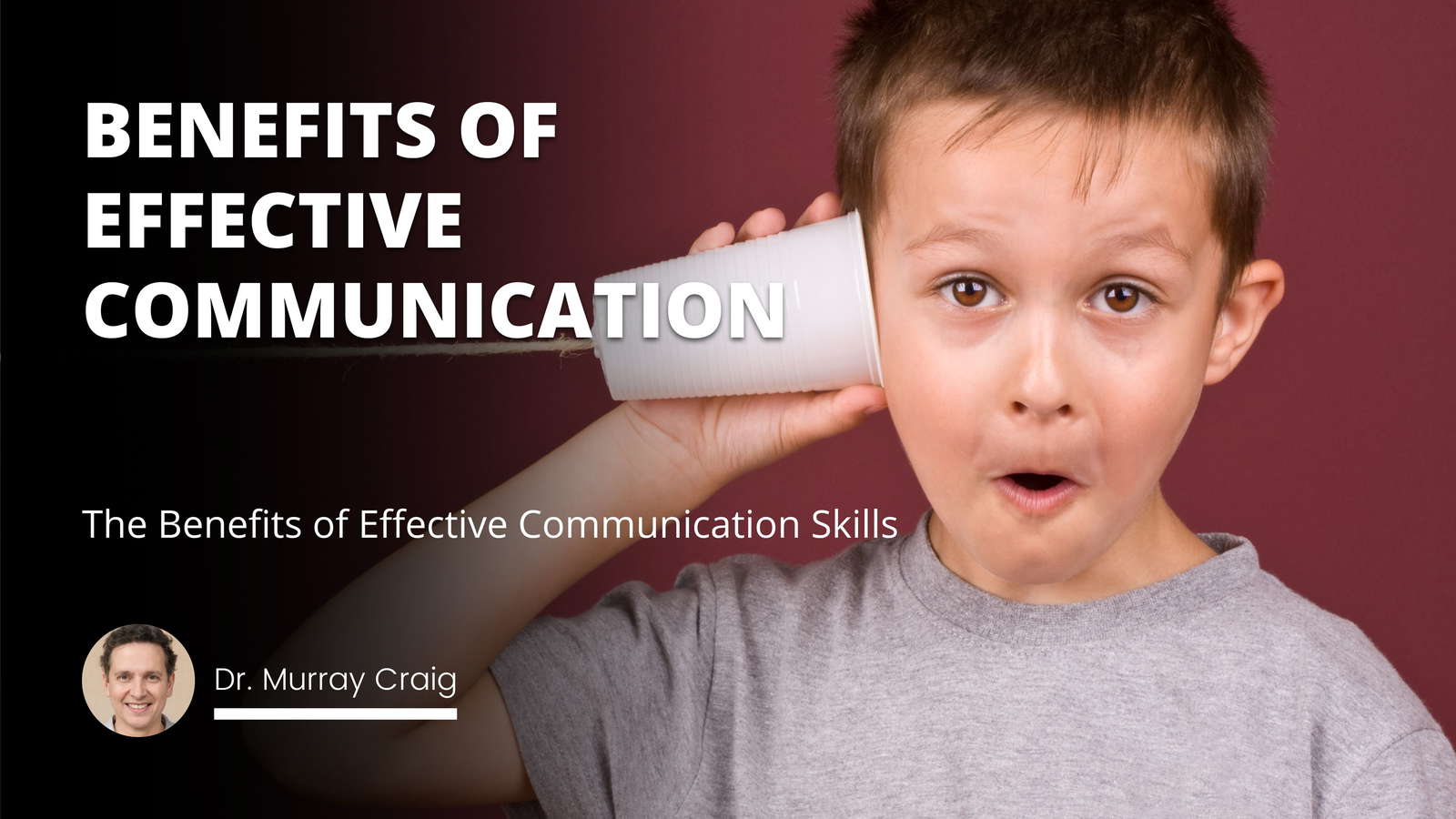
Definition and Overview of Active Listening
Benefits of Active Listening in Systemic Conversation Management
Techniques for Effective Active Listening
Challenges to Implementing Active Listening in Systemic Conversations
Strategies for Overcoming Those Challenges
Active listening is a communication skill that involves paying close attention to what people say, asking questions to understand the message, and providing feedback to ensure the message is properly understood. This skill is essential for effective communication, as it helps to ensure that all parties are on the same page and that all concerns are addressed. In this blog post, we will look at the definition, benefits, techniques, and challenges of active listening.
Definition and Overview of Active Listening
Definition: Active listening is an important communication skill that involves actively engaging with a speaker to fully understand their message. It involves more than just hearing what the speaker is saying but also asking questions and providing feedback to ensure the message is understood correctly. Active listening is a crucial part of effective communication, as it helps to ensure that everyone is on the same page and that all concerns are addressed.
Benefits: Active listening has many benefits, including:
Enhancing relationships: Active listening can help build stronger relationships by showing that you care about what someone is saying and are genuinely engaged in the conversation.
Solving conflicts: Active listening can help resolve conflicts by ensuring that all parties understand each other's perspectives and can agree.
Improving communication: By actively engaging with the speaker, active listening can help to ensure that the message is understood correctly and that all concerns are addressed.
Facilitating understanding: Active listening facilitates understanding by allowing the speaker to explain their thoughts and feelings in more detail.
Techniques: Several techniques can be used to practice active listening, such as:
Clarifying: Ask questions to make sure you understand the message.
Summarizing: Summarize the key points to ensure the message is properly understood.
Reframing: Find alternative ways to interpret the message.
Open-ended questions: Ask questions that require more than a yes or no answer.
Paraphrasing: Restate the speaker's message in your own words.
Challenges: Active listening can be challenging, requiring much focus and attention. Additionally, remaining objective when listening to someone else's perspective can be complicated. Finally, active listening can be difficult in a noisy environment, as focusing on the speaker's message can be challenging.
Active listening is an important communication skill that involves actively engaging with a speaker to understand their message fully. It has many benefits, such as enhancing relationships, solving conflicts, improving communication, and facilitating understanding. Several techniques can be used to practice active listening, although it can be challenging at times. Nevertheless, by practicing active listening, you can ensure that your conversations are effective and meaningful.
Benefits of Active Listening in Systemic Conversation Management
Active listening is an effective communication tool with numerous benefits in systemic conversation management. It can help ensure that conversations are productive and meaningful and increase understanding and connection between participants.
Increased Self-Awareness
Active listening encourages participants to become aware of their own thoughts and feelings, allowing them to better understand their motivations and intentions. This can lead to improved self-awareness, which can help people develop better relationships with others.
Improved Understanding
Active listening can help improve participants' understanding by encouraging them to consider different perspectives and opinions. This helps ensure that conversations are more meaningful and productive, as participants can consider different points of view.
Improved Communication
Encouraging participants to listen to one another actively, active listening can help to improve communication between them. This helps to ensure that conversations remain productive and meaningful, as well as fostering a sense of connection and understanding between participants.
Reduced Conflict
Active listening can also reduce participant conflict, encouraging people to consider different perspectives and opinions. This helps to ensure that conversations remain productive and meaningful, as well as reducing the likelihood of disagreements and misunderstandings.
Improved Decision-Making
Active listening can also help to improve decision-making in systemic conversation management. By encouraging participants to consider different perspectives and opinions, active listening can help to ensure that decisions are based on facts and evidence rather than personal opinions or biases.
Active listening is an essential tool in systemic conversation management, as it can help ensure that conversations are productive and meaningful and foster understanding and connection between participants. It can also help to improve self-awareness, communication, conflict resolution, and decision-making.
Techniques for Effective Active Listening
Developing Active Listening Skills: Active listening requires the listener to engage with the speaker entirely. This involves the listener's full attention, including body language and eye contact. The listener must be nonjudgmental and open to the speaker's ideas. Additionally, the listener should provide verbal and nonverbal feedback to the speaker, such as nodding or repeating what the speaker has said.
Asking Questions
Asking questions is a critical component of active listening. By asking the speaker questions, it shows that the listener is engaged in the conversation and is actively trying to understand the speaker's perspective. Therefore, questions should be open-ended and focus on clarifying any confusion or gaps in understanding.
Paraphrasing
Paraphrasing is another essential part of active listening. The listener should restate what the speaker has said in their own words to demonstrate that they have understood the speaker. This will help to ensure that the listener and speaker are on the same page.
Summarizing
Summarizing is an effective way to check to understand and ensure the conversation stays on track. The listener should be able to summarize the main points of the conversation, including the speaker's perspective and any important details. Summarizing can also move the conversation forward and allow the speaker to see the big picture.
Listening Without Interrupting
The listener must refrain from interrupting the speaker. This will ensure the speaker can fully express their thoughts and feelings without interruption. Additionally, it will demonstrate to the speaker that the listener is fully engaged and paying attention.
Challenges to Implementing Active Listening in Systemic Conversations
Active listening is an effective communication tool that can be applied in systemic conversations to facilitate a collaborative dialogue. However, it can be challenging to implement active listening into systemic conversations due to certain factors and dynamics.
Power Dynamics
Power dynamics can be an obstacle to using active listening in systemic conversations. Conversations with a power dynamic, such as between a supervisor and an employee, can be difficult for the lesser-powered party to feel comfortable enough to listen actively.
Time Constraints
Time constraints can also be challenging when implementing active listening, as systemic conversations can often be lengthy and require much time to be effective. If a conversation is rushed or time is limited, it can be challenging to allow each person to practice active listening.
Structure
Active listening requires a structured conversation for a balanced dialogue between all parties. Without a structure, conversations can quickly become chaotic and derail the active listening process.
Differing Perspectives
In systemic conversations, there are often different perspectives that can complicate the active listening process. This can be difficult to manage and can lead to misunderstandings and disagreements.
Active listening is a powerful tool that can be beneficial in systemic conversations. However, there can be challenges to implementing active listening in these contexts. It is essential to be aware of the power dynamics, time constraints, the need for structure, and differing perspectives that can make implementing active listening difficult.
Strategies for Overcoming Those Challenges
Know Your Listeners: It is essential to be mindful of the context in which you engage in active listening. Knowing your audience and the potential challenges they may face can help you to adjust your approach accordingly.
Practice: Becoming a better active listener requires practice. Listen to conversations and practice reflecting on what you heard about building your skills.
Open Communication: Encourage an open dialogue by asking open-ended questions and inviting feedback. This will create an environment where everyone feels comfortable communicating.
Empathy: Viewing the situation from the other person's perspective is essential to active listening. Consider their feelings, thoughts, and concerns.
Nonjudgmental Attitude: When engaged in active listening, maintain a nonjudgmental attitude. Stay focused on understanding the other person's perspective and refrain from passing judgment.
Reflective Listening: Reflective listening is a powerful tool that involves repeating what the other person has said to show understanding. This helps build trust and improve communication.
Group Discussions: Group discussions can be a great way to practice active listening skills in a safe and supportive environment.
Know Your Limits: When actively listening, it is essential to understand your limits and boundaries. If you feel overwhelmed or stressed, taking a step back and prioritizing your well-being is essential.
In conclusion, while active listening can be challenging to master, several strategies can help you overcome the challenges. Being mindful of the context, practicing, fostering open communication, and developing empathy are just some strategies that can help you become a better active listener.
The key to successful communication is active listening; it opens the door to understanding.
Frequently Asked Questions
What is active listening?
Active listening is an essential communication skill that involves paying close attention to the speaker and providing verbal or nonverbal feedback. It requires being present in the moment, focusing on what is being said, and understanding the speaker's point of view. Through active listening, a listener can better understand what someone else is saying and create a more meaningful conversation.
Benefits of Active Listening
Active listening has many benefits for both the listener and the speaker. First, active listening allows the speaker to feel heard, understood, and supported. This encourages open communication and makes the speaker more likely to share their thoughts honestly in future conversations. For the listener, active listening helps foster trust between people by creating more significant insight into someone's thoughts and feelings. Additionally, it helps build empathy by teaching listeners how to interpret other people's needs accurately.
Components of Active Listening
Active listening consists of four components: attending, responding, reflecting, and summarizing. Attending involves eye contact with the speaker while paying attention to their body language and words. Responding involves giving verbal or nonverbal cues, such as nodding or smiling, that show you are engaged in the conversation and understand what they are saying. Reflecting involves repeating what was said or paraphrasing it in your own words to ensure you have interpreted their meaning accurately. Lastly, summarizing involves briefly restating the main points from the conversation at appropriate times for better comprehension between both parties involved in conversing with one another.
Barriers to Active Listening
Although active listening is an essential skill for all individuals to master for effective communication with others, specific barriers may prevent the effective implementation of these skills. Some common barriers include distractions from outside sources such as cell phones or other electronic devices, lack of focus due to multitasking, and talking over others rather than letting them finish speaking. Personal biases lead one to pass judgment on another person's opinions before they have been fully articulated; prejudice against certain races, genders, ages, etc., leads one not to take another person's opinion seriously. Additionally, assumptions about what another person means can block the successful implementation of active listening techniques.
Active listening is a powerful tool that can be used by individuals in order to improve communication within any setting. Actively attending to someone else's words while providing feedback through verbal or non-verbal cues such as nodding or smiling shows respect towards them while allowing for an exchange of ideas between two parties. For effective implementation of this skill set, however, one must make sure all external distractions are avoided along with any internal biases, which may lead one not to take another person's opinion seriously, thus blocking the successful implementation of active listening techniques.
What are the benefits of active listening?
Active listening is an important skill to acquire in any field of work and can be beneficial in multiple ways. It involves listening attentively to another person’s words and responding in a way that shows an understanding of their message. By active listening, individuals can develop deeper relationships with colleagues, enhance their communication abilities and improve their overall mental health.
Benefits of Active Listening
1. Improved Relationships: Active listening enhances relationships between colleagues, clients, and employers by showing them that you are genuinely interested in what they say. It can help build trust between people, as it conveys respect and understanding.
2. Improved Communication: Active listening can help individuals become better communicators. By carefully considering the other person’s point of view and responding with thoughtful questions, people can learn to listen more effectively and express their thoughts more clearly.
3. Improved Mental Health: Active listening can benefit mental health in several ways. It can help people better understand their own emotions and those of the other person. Additionally, it can reduce stress levels and help people form stronger connections with their peers.
In conclusion, active listening is an essential skill in any field. It can enhance colleague relationships, improve communication abilities and benefit mental health. Therefore, it is essential to make an effort to practice active listening when communicating with others.
What techniques can be used to practice active listening?
Active listening is an important communication skill to develop, as it helps us better understand the speaker and convey our understanding to them. Several techniques can be used to practice active listening, including paying attention, asking questions, summarizing and clarifying, and providing feedback.
Paying Attention
The listener should pay close attention to the speaker’s verbal and nonverbal cues to fully understand their message. The listener can show they are paying attention by making eye contact and nodding. Listening without interrupting is also essential; this allows the speaker time to express their thoughts fully.
Asking Questions
For a listener to gain a deeper understanding of what is being said, it is beneficial to ask relevant questions about the topic or issue being discussed. This encourages the speaker to provide more detail about their thoughts or feelings.
Summarizing & Clarifying
The listener can summarize what has been said so that both parties can clearly understand each other’s perspectives. The summary should be concise yet include all relevant points discussed by both parties during the conversation. The listener can also clarify any points they do not understand by restating what was said in their own words or asking follow-up questions.
Providing Feedback
Providing feedback after listening actively helps validate what was said by expressing understanding or agreement with specific points made by the speaker. It also helps create a further dialogue between both parties, encouraging further discussion of thoughts and opinions on a particular issue or topic.
Overall, practicing active listening helps improve communication with others as it allows us time to fully process the information being communicated by another person before appropriately responding to them. As such, developing active listening skills will help build strong relationships with others based on mutual understanding and respect for each other’s perspectives on different matters


